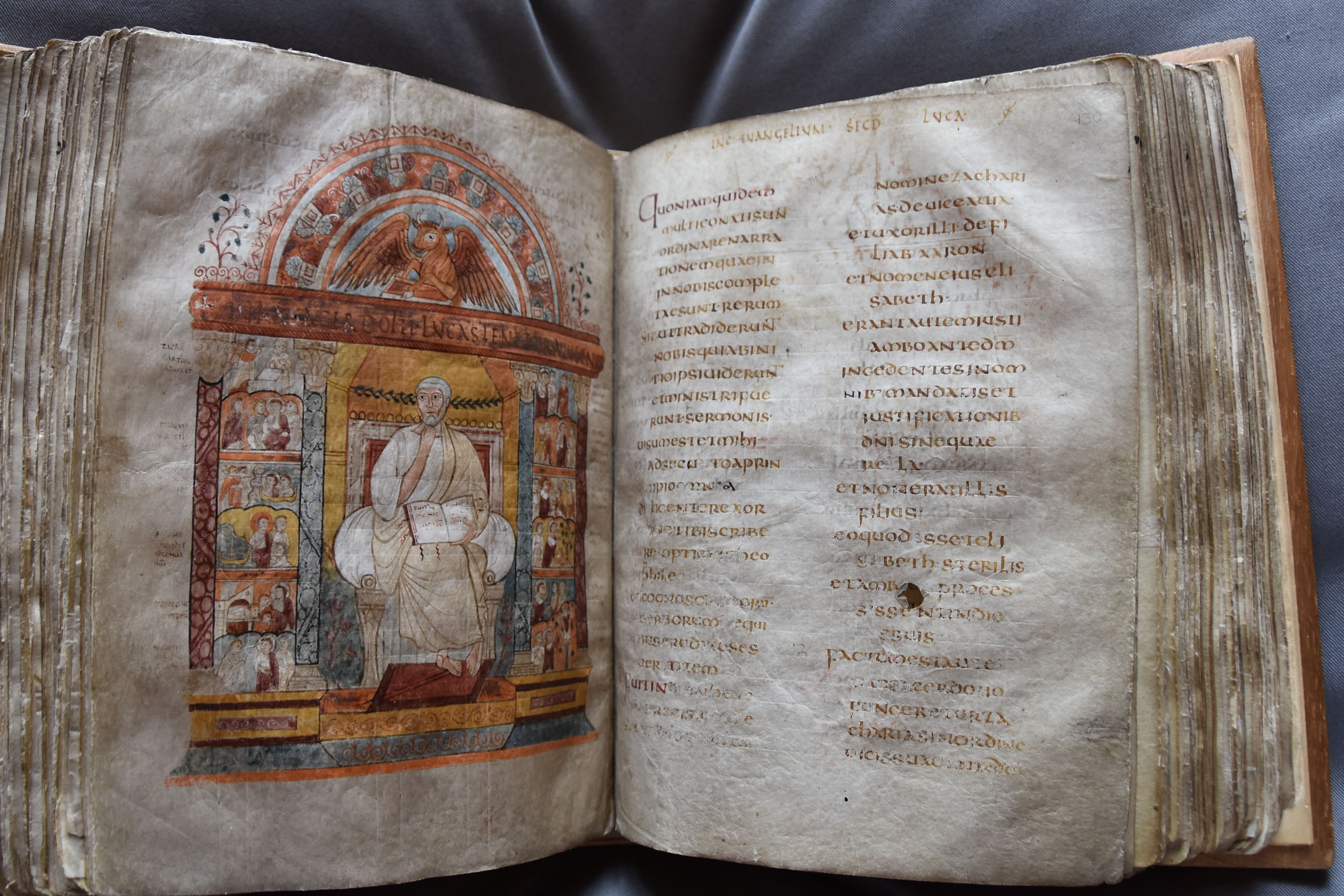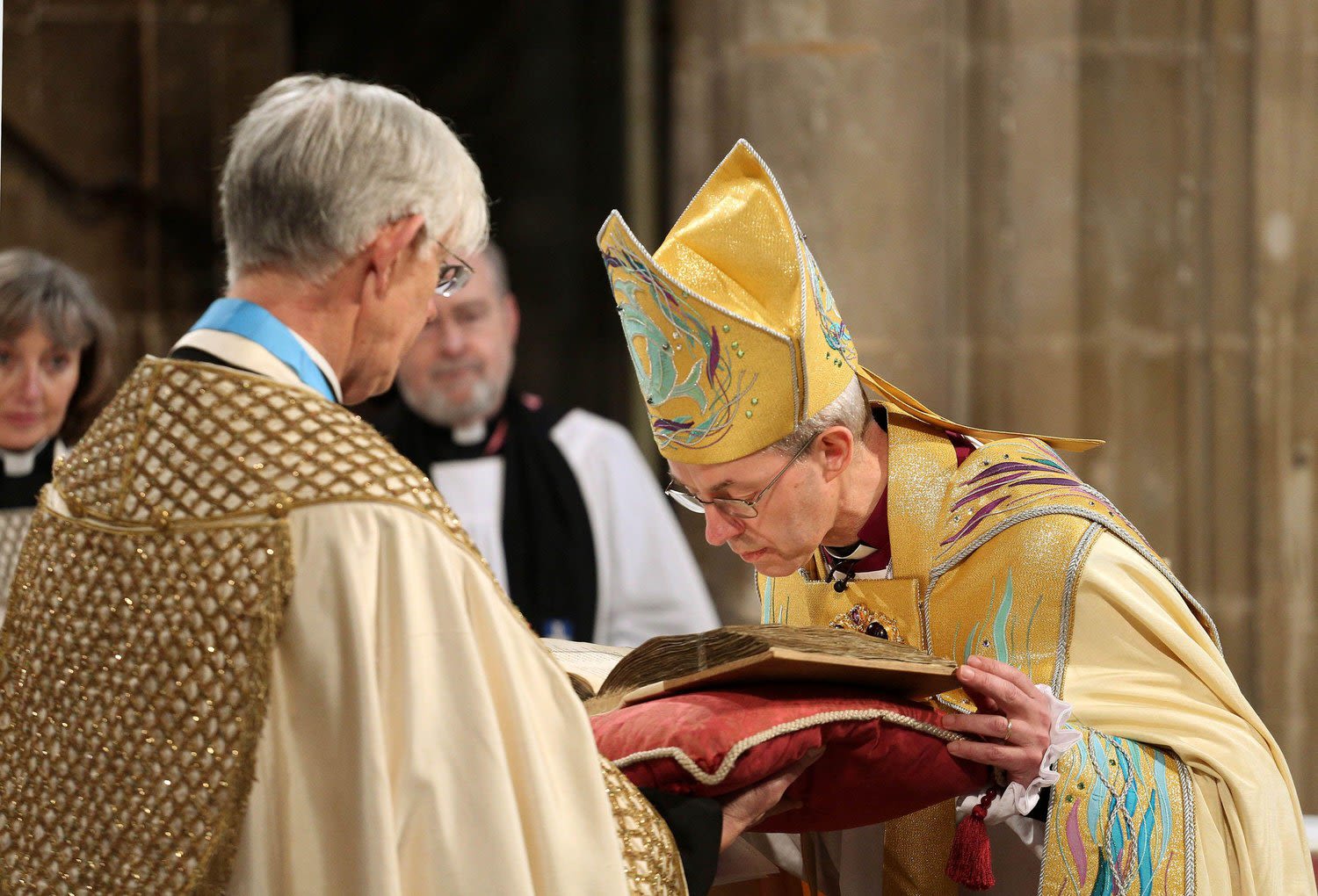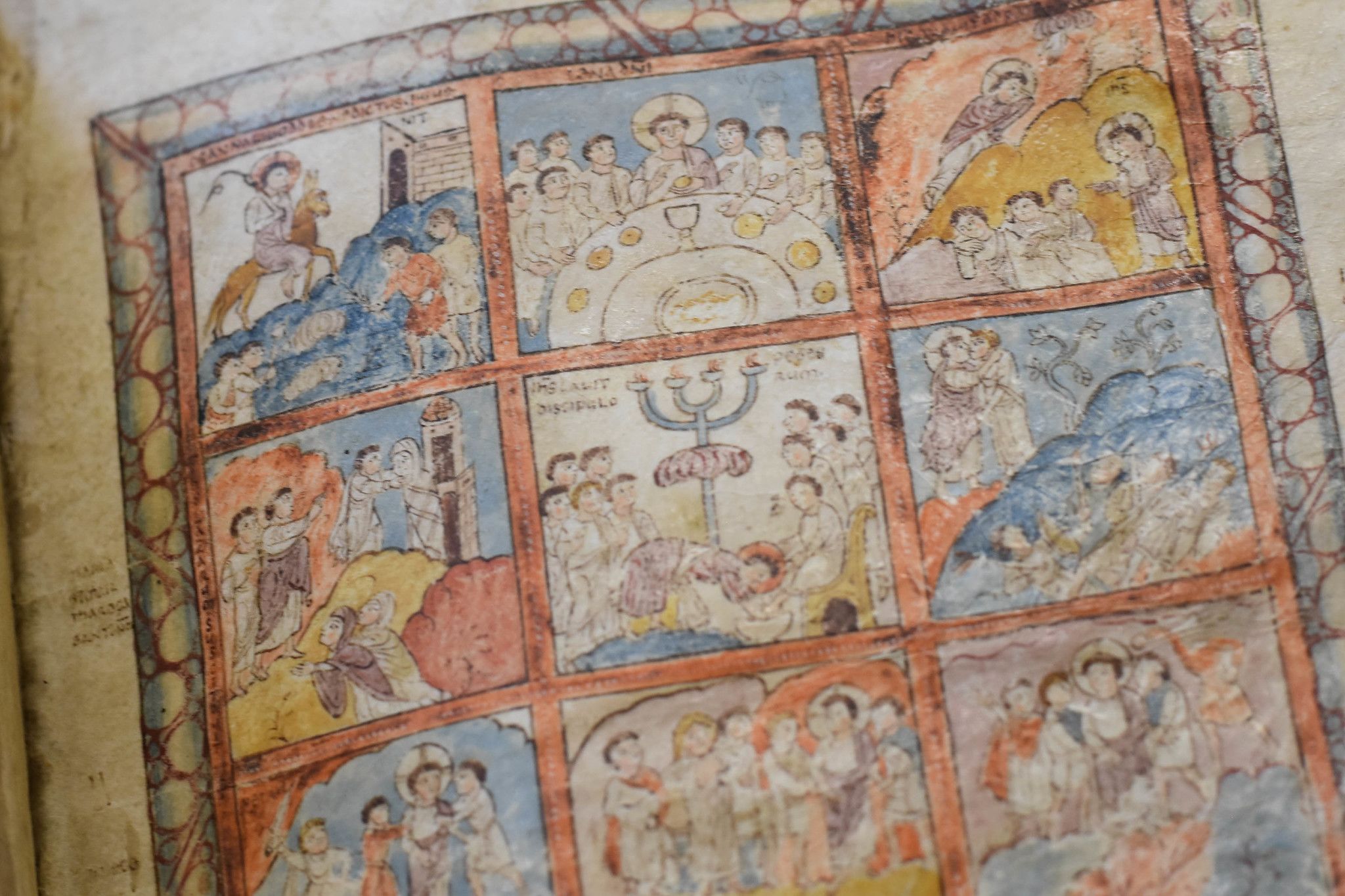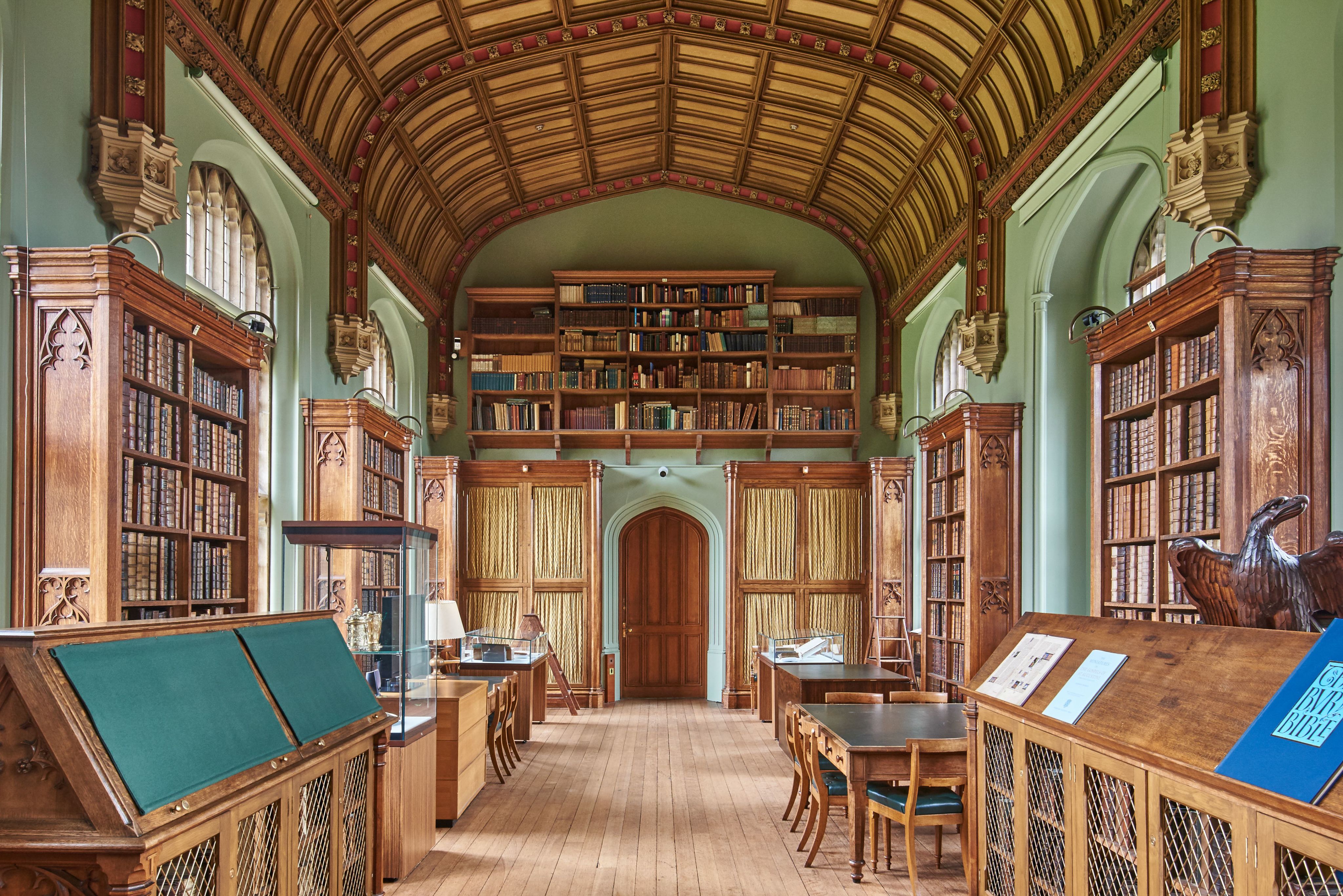Unique sixth-century Augustine Gospels entered into the UNESCO UK Memory of the World Register

Precious manuscript housed in the Parker Library at Corpus Christi College Cambridge is of ‘unparalleled significance’ in British history.
One of the greatest treasures of the Parker Library at Corpus Christi College is the sixth-century Augustine Gospels (CCCC MS 286). Although the illustrious provenance and influence of this manuscript have long been known, it has now been recognised as a pivotal document in the history of Britain and entered into the UNESCO UK Memory of the World Register, an archive of the most important documentary heritage of national significance.
The Augustine Gospels contains 265 folios of the Latin version of the four Gospels. It was owned by St Augustine of Canterbury and is the only surviving manuscript from the collection of books that was sent in 601 by Pope Gregory the Great to aid Augustine in his expedition to convert the Anglo-Saxon kingdoms to Christianity.

Illuminating. The original book contained illustrations at the beginning of each of the Gospels; only Luke, shown here, remains (folio 129v).
Illuminating. The original book contained illustrations at the beginning of each of the Gospels; only Luke, shown here, remains (folio 129v).
Augustine landed in Thanet in 597, subsequently settled in Canterbury and with the permission of King Ethelbert of Kent, began preaching to the local populace. Within a few years Augustine was successful in his mission when Ethelbert became the first English king to convert to Christianity. Wider-scale conversion to Christianity took place and Augustine himself became the first Archbishop of Canterbury.
Dr Philippa Hoskin, Director of the Parker Library and Donnelley Fellow Librarian said, “This book is a key formative moment in British history. Books were fundamental to the success of Augustine’s mission. Without this volume we would lack a tangible connection to the point in British history where the influence of the Roman Church began.”
This pivotal moment is also when the Anglo-Saxon kingdoms moved closer to their Christian neighbours in Western Europe, adopting new outlooks and practices which would draw them more firmly into not only the orbit of the papacy and the church but also the powerful post-Roman successor kingdoms.
The Augustine Gospels continue to play an important role in the modern Church of England, embedded in the ceremony of enthronement for the last seven Archbishops of Canterbury and venerated on two papal visits (John Paul II in 1982 and Benedict XVI in 2010).

Enthronement of Archbishops. The Most Reverend Justin Welby is presented with the Augustine Gospels in March 2013 during his enthronement as 105th Archbishop of Canterbury.
Enthronement of Archbishops. The Most Reverend Justin Welby is presented with the Augustine Gospels in March 2013 during his enthronement as 105th Archbishop of Canterbury.
Professor Christopher Kelly, Master of Corpus Christi College commented, “I am delighted that UNESCO has recognised the outstanding significance of the Augustine Gospels. Corpus Christi – the only college in Oxford or Cambridge to have been founded by townspeople – is proud to look after the Gospels and the Parker Library on behalf of the whole nation.”
Ms Laura Davies, UK Ambassador to UNESCO said, "UNESCO's Memory of the World Programme is the documentary equivalent of World Heritage Sites. A Gospel that has been in continuous use for over a millennium is a brilliant and diverse addition to an already internationally significant register. Archives tell us the story of us, for good and bad - it is critical that we preserve and ensure access to them."
Learning from the Augustine Gospels
This version of the Gospels is unique not only for the influence it has exerted over British governance and administration for the last fourteen centuries, but also for its material qualities. It is the oldest illustrated Latin version of the Gospels in the world and the earliest surviving book with a continuous history in medieval England. Unlike more lavishly illuminated Gospels, it appears to have been primarily intended as a teaching aide, as evidenced by the size of the book itself (quite portable), the generous height of the text (readable whilst being held) and the presence of the illustrations, of which only two remain. The first of these are the frontispiece for the Gospel of Luke.
The other surviving illustration is a page of twelve framed vignettes depicting scenes from the Passion of Christ. These illustrations have been studied by Professor George van Kooten, Lady Margaret's Professor of Divinity at the University of Cambridge. Professor van Kooten notes that “The vignettes resemble cartoons or even a concise graphic novel. It’s very easy to follow Christ through the succession of scenes from the Gospels, from his arrival at Jerusalem to the carrying of the cross to the crucifixion.”
“What is also striking is that Christ is clearly depicted in a purple toga, a garment worn by Roman civilian magistrates and dignitaries. This shows how Christ was being presented in these Gospels to the native British population as a figure of peace two centuries after the Roman army had withdrawn from Britain.”

The Gospels are written primarily in the Latin Vulgate, a revised version of the Gospel text edited by St Jerome in the late fourth century. However, the Latin does deviate from the Vulgate at certain points (preferring the older, unrevised Vetus Latina), giving further evidence of the book’s provenance. Amendments to the original text were inserted during the seventh and eighth centuries. These are visibly darker and include corrections to the spelling of certain words (to conform to emerging orthographic conventions) and revises to bring the text in line with the Vulgate Latin. These changes again emphasise that the Gospels were still actively in use for teaching and reading.
Professor Richard Gameson, Professor of the History of the Book at Durham University, has examined the Gospels in detail. He said, “The old Latin version of the Bible is all sorts of ad hoc translation, and some of the readings in the Augustine Gospels are the old Latin ones, rather than the Vulgate. Perhaps the scribe is copying away and he reads a couple of lines that are familiar to him, so he puts down a slightly different version that he already knows by heart. Or it could also be that this is the influence of Gregory the Great himself, who is known to have preferred the Vulgate but for individual readings tended to use the old Latin. That’s exactly what we find in the text of this manuscript.”
For a thousand years after Augustine’s mission, the Gospels were kept at St Augustine’s Abbey in Canterbury. In 1538, during the English Reformation, the Abbey was suppressed. Thirty years later, Queen Elizabeth I gave Matthew Parker (then Archbishop of Canterbury) permission to rescue what then survived from the dissolution of England’s great monastic libraries. Parker collected nearly 600 manuscripts and many early printed books. When he died in 1575, he bequeathed his library to his Cambridge college, where he had been both undergraduate and Master.

The Parker Library at Corpus Christi College Cambridge.
The Parker Library at Corpus Christi College Cambridge.
For the last 450 years, Parker’s collection has been kept safe in the Parker Library. In 2009, the College launched Parker on the Web, one of the first full-library manuscript digitisation projects in the world. In 2017, online access to the treasures of the Parker Library (including the Augustine Gospels) was made fully and freely available.
Published 26 April 2023
With thanks to
Dr Philippa Hoskin, Professor Christopher Kelly, Professor George van Kooten, Professor Richard Gameson, Charis Goodyear
Words & Design
Fiona Gilsenan

